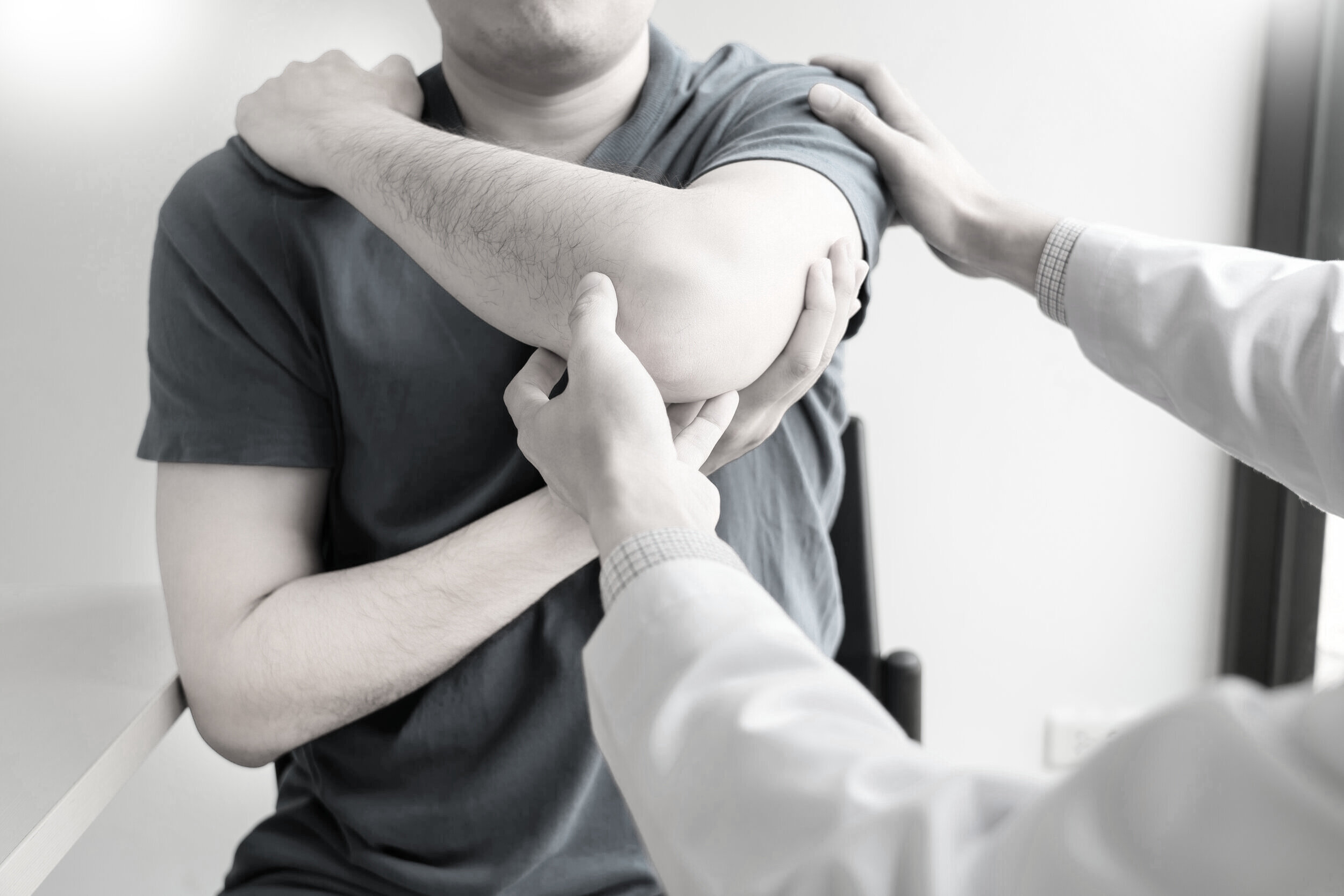Rotator Cuff Repair.
Why might I need a rotator cuff repair?
Mr Moverley will recommend this procedure if you are experiencing symptoms (pain, stiffness and weakness) related to a proven rotator cuff tear. Surgery is usually only required once an appropriate course of physiotherapy has been undertaken and symptoms persist to an unmanageable level.
What does surgery involve?
On the day of surgery you will be admitted to the ward or surgical admission area. You will once again meet Mr Moverley who will ensure you are still happy to proceed and that you understand the risks and benefits of the procedure. This is a good opportunity for you to ask any further questions. You will be asked to sign a consent form if you have not already done so.
You will meet your anaesthetist who will explain the type of anaesthetic you will receive. Rotator cuff surgery usually requires a general anaesthetic (you will be asleep) and a nerve block so that the arm will be numb for approximately 12 hours post operatively.
The operation for a rotator cuff tear aims to reattach the torn tendon to the bone. The tendon is reattached using small, corkscrew like anchors with stitches that are passed through the tendon to tie it down onto the bone.
The surgery is usually performed as an arthroscopic (key-hole) procedure but occasionally large tears require an open approach.
An arthroscopic rotator cuff repair is performed as a ‘key-hole’ procedure through 4-5 small incisions. Mr Moverley will be able to assess the inside of your shoulder in great detail using a high-resolution camera and will reattach any torn tendon back down to the bone.
A typical technique employed by your surgeon can be viewed here for information purposes. Mr Moverley will use a combination of proven techniques to provide a bespoke solution based on your shoulder.
Medium or large rotator cuff repair
Small rotator cuff tear repair
An open rotator cuff repair uses the same techniques to reattach the tendon to the bone but is done through a 5-10 cm incision on the side of the shoulder.
The long-term results of arthroscopic and open repair are the same but the recovery is slightly quicker with arthroscopic repair and the scars are more cosmetic.
The procedure is usually done as a day case meaning you can go home on the same day as your surgery.
The wounds are repaired with stitches and covered with a splash proof dressing. The wounds should be kept dry for 10-14 days.
What happens post operatively?
Immediately after surgery your arm will be in a sling and will usually feel heavy and numb as a result of the nerve block. You will be given painkillers if you are in any pain, and these will also be provided upon discharge.
A physiotherapist will assess you to make sure that you can remove and apply the sling safely. They will provide some early exercises to help prevent stiffness of the hand, wrist and shoulder.
How long is the rehabilitation process?
You will require extensive physiotherapy to maximise the benefit from your rotator cuff repair surgery. The final result from rotator cuff repair surgery often takes 6-12 months to be achieved but you should start to notice benefits before this time.
Physiotherapy is individualised to your specific needs and will progress with the following goals:
Early (0-6 weeks): Minimize post-operative stiffness with active finger, wrist and elbow movements. Gentle shoulder pendulum and scapula setting exercises. Protection in a sling for 4 weeks minimum. Progression to full passive range of movement after 4 weeks.
Middle (7-12 weeks): Start full active range of movement under supervision of physiotherapist, combined direction movements allowed where possible.
Late (12 weeks and beyond): Rotator cuff strengthening program with gradual build up to previous strength over a 6-8 week period. Dynamic scapula control exercises. Graded return to all previous functional and recreation activities.
Approximately how long will it be before I can…?
Drive 8 weeks
Desk job 2 weeks
Manual work 16 weeks
Golf 16 weeks
Racket sport 24 weeks
Contact sport 9 months
Swimming 16 weeks
What are the potential risks and complications?
As with any operation, a small number of people may have problems after rotator cuff surgery. Most of these problems are quite minor and can be treated easily but occasionally further surgery is needed.
The main risks are:
Infection – less than 1% of cases
Stiffness - Mild stiffness is quite common but occasionally a frozen shoulder can develop (5% of cases) which can prolong your recovery by a few months, it usually responds well to a steroid injection.
Re-tear or failure of the tendon to heal (up to 30% of cases). The bigger the tear and the older you are the higher chance that the repair will fail or a re-tear will occur. However even in the presence of a re-tear many patients’ symptoms are improved. Very few patients will require further surgery or re-repair.
Is rotator cuff repair always successful?
Approximately 85% of patients will make a good or excellent recovery. 10% will have some on-going symptoms but will be satisfied with their outcome. Around 5% of patients are dissatisfied with the outcome of their surgery and some of these and will require further surgery.
The results of rotator cuff repair are therefore not guaranteed which is why Mr Moverley will want to ensure that all non-operative measures have been exhausted first.

